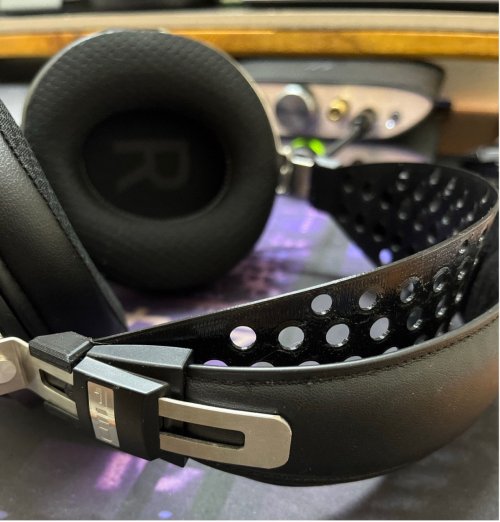Disclaimer
Hello everyone! I want to let you all know that the FT1 was sent to me by FiiO for a review. But still, it is very important for me to make it clear that everything I've shared here is based on my own experience with the FT1, and I've done my best to be honest and fair. My goal is to always be transparent and clear in all of my reviews and keep my reviews unbiased!
A big thank you to FiiO for sending me the FT1. And, of course, a huge thanks to you for trusting me and taking the time to read my review. I really appreciate it!
The full review can also be found on
https://mobileaudiophile.com/, via this
link
Introduction
Ok, lets introduce the FiiO FT1, which is FiiO’s new closed back headphones, and they are actually very exciting, especially if you are looking for something that wont break the bank, but still with an amazing tuning for the price of $149.99. I would say that these headphones pack in some cool features that usually can be found in more expensive models. They come with beautiful American black walnut ear cups, a big 60mm driver, and a focus on comfort and tuning, the FT1 is designed for people who want great sound whether they are at home, at work, or on the go. They’re also built to keep outside noise out, so you can really get lost in your music. Let’s take a closer look at what the FT1 has to offer.
Unboxing
Unboxing the FiiO FT1 was a real treat. It comes in a beautiful FiiO style box with the FT1 displayed sideways, showing the beautiful walnut earcups. When I opened it up, I was immediately greeted by a great looking, hard carrying case. Everything included was inside this case.
The case is very solid, feels premium and offers a great protection for the headphones, although it could have been much nicer if it had some sections or pockets for the included accessories... Alongside that, there were two cables included; a 3.5mm single ended cable and a 4.4mm balanced cable. It’s nice that they added both options, and the cables themselves feel sturdy, thick and well made. There is also a 1/4 inch adapter, which is always handy to have.
The headphones themselves... They are beautiful! When I pulled them out of the box, I was immediately struck by how beautiful they look. The mix of real American walnut ear cups gives them a classy, high end look. The metal sliders and fork also add to that premium feel.
Overall, the unboxing experience was very satisfying. Everything was packaged with care, and the accessories included are more than generous for the price. I rarely see such a nice package for this price!
Technical Specifications
Driver Configuration
- Driver Type: 60mm large dynamic driver
- Diaphragm Material: PU + Nanowood fiber composite
- Voice Coil: 25mm large diameter, copper wire
- Suspension Design: W-shaped suspension gasket with a hard metal dome
Specs
- Frequency Response: 10Hz to 40kHz
- Sensitivity: 98dB/mW @ 1kHz 113dB/Vrms @ 1kHz
- Impedance: 32Ω @ 1kHz
Build Characteristics
- Ear Cup Material: American black walnut (available initially), with a lighter beech version expected in October
- Headband Design: 3-axis adaptive headband with automatic rebound and ball-bearing slide rail
- Ear Pad Design: Detachable, with breathable fabric for comfort
- Weight: Approximately 340g (without cable)
Connectivity
- Headphone Connectors: Dual 3.5mm (TRS) to 3.5mm single-ended, Dual 3.5mm (TRS) to 4.4mm balanced
- Cable: 392-wire silver-plated oxygen-free copper, 1.5 meters in length
- Additional Features
- Passive Noise Cancellation: 26dB
- Included Accessories: Storage bag - 3.5mm to 6.35mm adapter - Quick start guide
Build and Materials
Driver Design
The FT1 is equipped with a 60mm dynamic driver, specially developed by FiiO. The driver features a Nanowood fiber composite diaphragm combined with a W-shaped suspension gasket. This design ensures precise, powerful sound reproduction with enhanced bass extension and reduced distortion. The 25mm voice coil, made from thin copper wire, enhances the driver’s efficiency, providing better dynamics and energy, especially in the mid frequencies.
Ear Cup and Headband
The FT1’s ear cups are made from American black walnut, which is pretty durable with unique grain patterns, making each pair of headphones pretty unique. The ear cups are CNC processed, and they have a very smooth and refined finish. The headband is very comfortable with pleather like material on the inside and soft bumps. All of this is place on a 3 axis adaptive mechanism with ball bearing slide rail which really gives a smooth and precise adjustment.
Connectivity and Cables
The FT1 comes with dual 3.5mm connectors and two detachable cables: a 3.5mm single-ended cable and a 4.4mm balanced cable. Both cables are made from 392 strands of silver plated oxygen free copper.
Sound performance
Bass
The bass on the FiiO FT1 is definitely there, and its quite strong. It is full and gives a nice warmth to the sound, which makes the sound richer and engaging. I wouldn't say that it is overwhelmingly dominant, but it’s certainly there and it adds a big amount of depth and impact to the music. You can feel the power behind each note, but it doesn't bleed to much to other frequencies.
Sub bass
In the su -bass region, the FT1 gives a very satisfying rumble that I can really feel more than hear. It’s deep and smooth, and I have the sensation that it adds an extra layer of depth to bass heavy tracks. All I can say is "very well done FiiO!"
Mid Bass
The mid bass is a bit more prominent, and it gives the FT1 a warm and slightly punchy character. This area is where I sometimes might feel the bass getting a bit thick or even slightly muddy, depending on the track... But it adds body and fullness to the sound, although sometimes can blur into the mids, especially on more complex tracks, but it surely isn't that bad! I can even say that this warmth can be quite enjoyable for electronic music for example.
Mids
The mids on the FT1 are well balanced, getting very nicely into the mix without being to much overshadowed by the bass. They have a natural and smooth feel to them, that makes vocals and instruments sound clear and present with a touch of warmth. The slight V shaped tuning means the mids aren’t the most forward, but they are not recessed to the point where you lose detail or clarity.
Lower Mids
The lower mids benefit from the warmth of the bass and gives them a fuller, richer sound. This creates a nice body for male vocals and instruments like guitars and pianos. It doesn’t feel thin or hollow, which makes, in my opinion, a very pleasant and engaging sound.
Upper Mids
The upper mids are slightly pushed forward, helping female vocals and higher pitched instruments stand out a bit. They have a touch of brightness, which adds clarity and presence to the sound without being harsh. This region helps to balance out the warmth from the lower mids, and making sure that the overall midrange remains detailed and clear.
Treble
The treble on the FT1 is well tuned, giving enough sparkle and air to keep the sound lively and engaging. It’s not overly sharp or sibilant and makes it easy for me to listen to them for extended periods. The treble complements the bass and mids well very well and it adds a sense of space and detail to the overall sound.
Lower Treble
The lower treble is smooth and controlled, avoiding any harshness or sharp peaks that could cause fatigue. It provides just enough energy to keep the sound lively, especially in percussion and string instruments, without becoming harsh.
Upper Treble
The upper treble extends nicely, giving the FT1 a good sense of air and openness. It’s not the most airy or spacious sound, but for a closed back headphone at this price, it does an amazing job. Additionally the sound extends very nicely and making a good sense of decay.
Overall, the FT1 offers a sound that is warm, slightly V shaped, and very enjoyable. It’s versatile enough to handle a wide range of music genres, providing a satisfying and engaging experience.
Technicalities
When it comes to the technical performance of the FiiO FT1, I'd say they do a good job, especially for the asking price, but to be honest they are not going to blow your mind... These headphones are more about the tuning and the impressive build quality than pushing for the best technicalities.
The soundstage, for instance, is decent but not the biggest... I can get a good sense of space, but it won't make me feel like I'm in a live concert, probably because of the closed back design... But it is definitely big enough to make a good room for the elements. Imaging is accurate enough to pinpoint instruments and vocals without much effort, but it doesn't have the razor sharp precision of some higher end models, and in very complex tracks, I can lose it a bit... Layering is handled well, meaning that different elements in the music don't get jumbled together, but it's not at a level where you'd pick up every tiny detail in complex passages effortlessly.
Detail retrieval is solid but leans more towards giving you the big picture, with focus on the macro details rather than diving deep into the micro details... But If you're someone who loves searching for every little sound in a track, these might not fully satisfy that urge. However, for most people, the FT1 will give a well rounded technical experience that complements its tuning and build, which are the real stars of the show.
Conclusions
Ok, so lets wrap up my experience with the FiiO FT1, and I have to say, these headphones have really impressed me, especially considering their price! They are not trying to be the most technical or the most analytical pair out there, but what they do offer is a really enjoyable sound, with outstanding build quality!
The sound is very well tuned, with a slight V shaped signature that brings out the bass and treble without muddying the mids too much. This makes them versatile enough to enjoy a wide range of music genres and in my opinion, they are still solid and do the job well for everyday listening.
What stands out the most for me, though, is how comfortable these are and how great they look and feel. The mix of materials, like the real American walnut ear cups, gives them a premium vibe that’s hard to find at this price point. The included accessories, like the different cables, which include a 4.4 balanced cable and the hard case, just add to the overall value.
In short, the FiiO FT1 is a fantastic option if you are looking for closed back headphones with a very good sound, great build quality and are very comfortable to wear. They might not satisfy those chasing the ultimate audio experience, but for most people, these headphones will be more than enough to enjoy the music in style and comfort.
Where to buy: (Non-affiliated! None of my reviews use affiliated links!)
FiiO AliExpress Official Store























